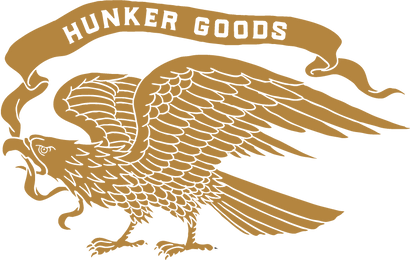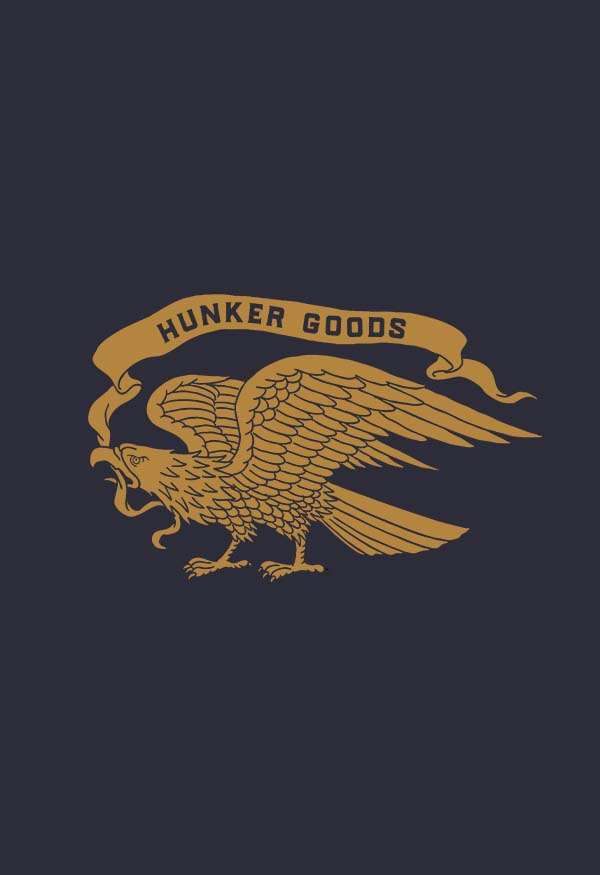Your Cart is Empty
Product Disclaimer, Care, Materials
Product Disclaimer
Please be aware that leather and waxed canvas are natural materials. Slight discoloration, scratches, or change in texture may be visible. These small inconsistencies should not be considered a defect but rather add to the beauty and uniqueness of your bag. Keep in mind that before an item is made, each hide and bolt of waxed canvas is inspected. We aim to provide the best looking piece of leather and waxed canvas to create your bag while reducing the amount of waste.
Care
We believe your bag should stand the test of time. Great leather and waxed canvas materials last for years and look better with age and wear. Each stain or scratch will make your bag uniquely yours. However, we do recommend periodical cleaning:
Leather: For all leather bags that are not suede, we recommend using the Hunker Bag Co. Leather Cleaner and Leather Conditioner. First, spray a light amount of the Leather Cleaner on a clean, soft rag. Gently rub the leather in a circular motion and let dry. Once dry, apply a small amount of the Leather Conditioner to a soft clean rag and gently rub the leather in a circular motion and let dry.
Suede: Can get dirty very easy and can also be hard to clean. When a stain occurs on your suede bag, we recommend tending to it immediately; the long its sits, the harder it becomes to clean. The best way to clean suede is with a suede brush and suede eraser. Both of those can be found at any local drug store such as Walgreen's. Gently brush the stain with the suede brush to loosen the dirt. Then, gently use the suede eraser in a circular motion until the stain becomes less visible. After using the eraser, gently brush of the excess dirt. We do recommend using a suede protector spray, such as the KIWI Suede & Nubuck Protector, on all suede bags.
Waxed Canvas: The canvas will develop a patina over time; use will bring out unique character and special qualities in the fabric that no other material could offer. Waxed canvas has been used for many years without any washing or cleaning. But if you feel you must clean your bag there’s a right and wrong way to do it. Most important is not to overdo it. First off, you should not dry clean or use detergent on your TexWax products. Secondly, lightly brush off soiled area with a brush. Start with plain water for cleaning. Run room temperature water over the are, gently use a scrub brush, rinse, and let it dry. Less is more. For stubborn spots or stains we recommend using the Hunker Bag Co. waxed canvas cleaner. Gently brush the stained area, spray a light amount of the canvas cleaner on the stain. Brush gently and then let it dry. Test a small area first. No stain is ever guaranteed to come out with any cleaning method.
Materials/Sourcing
All materials are sourced from small to mid-sized US owned and operated companies. Your bag will be 100% American made and designed. Each product is made to order in our small Nashville studio.
Bridle Leather:
We use this leather for all of our bag straps, and strap holders. Bridle Leather refers to the way that a piece of leather (cow hide) is finished at the tannery. It is drum dyed for true dye penetration and is stuffed with greases, tallows, and waxes that make it weather resistant. Bridle leather was designed for use in horse bridles, so it must be comfortable for a horse to wear next to the skin, as well as strong and durable. A riders life literally depends on bridle leather not failing unexpectedly. Its is subjected to quite high loads, and must tolerate this time after time, therefor making it the perfect leather for making our straps out of.
Hunker Bag Co. purchases its Bridle leather from Waterhouse Leather in Hyannis, Massachusetts. Founded in 1879, the have been providing fine leather hides for customers all over the United States and Canada for over 100 hundred years. All their Bridle Leather is made from only the finest U.S sourced native steer hides and tanned to our specifications in a state-of-the-art tannery.
Latigo:
We use this leather for the main leather components of each bag. Latigo leather is cowhide leather that is combination tanned. First it is chrome tanned, then it is vegetable tanned. This process makes the leather rigid but very pliable, giving it strength and flexibility.
Hunker Bag Co. purchases its Latigo leather from Horween Leather Company in Chicago, Illinois. Founded in1905, Horween has more than 100 years and five generations of leather making. They are known for their unparalleled blend of quality, consistency, responsiveness, and innovation.
Suede:
We use this leather for the main leather components of each suede bag. Suede leather is made from the underside of the of the cowhide, or the flesh side of the hide to produce a “nap”. Suede is soft, thin, and pliable, making it a very luxurious and dainty leather.
Hunker Bag Co. purchases its Suede leather from The Hide & Leather House in Nappa, CA.
Waxed Canvas:
We use two different types of waxed canvas for our bags. One is a 10.10 ounce Army Duck, and the other is an18 ounce Filter Twill. The 10.10 ounce Army Duck, also known as "shelter duck”, is a medium weight multi-purpose canvas fabric with a very tight, plied yarn weave construction making it very strong and resistant to tearing. Army Duck is loomed using smaller yarns creating an ultra smooth texture. The 18 Oz. Filter Twill is made with 3 plied yarns on the warp & the fill with a tight weave. This construction creates a stiffer & more durable fabric with a smooth texture.
Both waxed canvases are a TexWax product. TexWax is a cotton-based fabric impregnated with a proprietary and unique formulation of waxes that give the fabric a lasting and lifelong resistance to inclement weather. These waxes impart a high-degree of water repellency, low-temperature flexibility, high-meltpoint, and drape.
Hunker Bag Co. purchases its waxed canvas from Carr Textile in Fenton, MO. A family owned company since 1973. All fabric purchased from Carr Textile is OEKO-TEX certified. OEKO-TEX® is an international association of independent research and testing institutes focused on enhancing both product safety and sustainable production in the textile industry. The Association is made up of 18 member institutes with representative offices in more than 60 countries all over the world.

